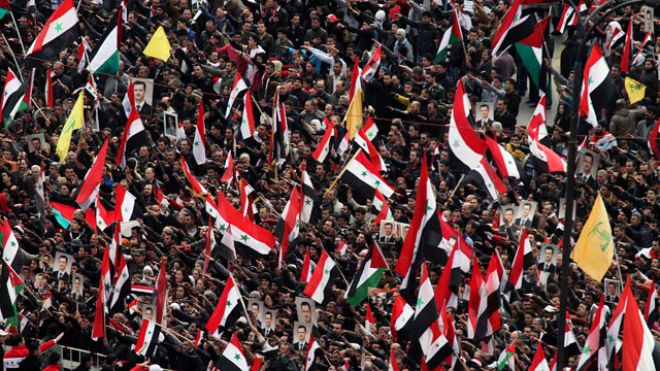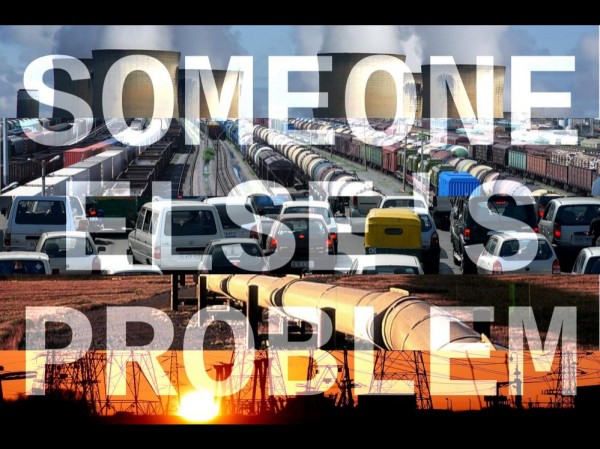Hearing a lot in the news about Syria lately and unsure of what’s going on?
Or, know that thousands of Syrians have been slain, but not sure who is culpable and what all the fighting is about?
Or, do you understand that President (some might say dictator) Bashar al-Assad supposedly used chemical weapons against his own people, but unsure how other countries are responding?
No need to be embarrassed. You are certainly not alone. The Syrian civil war is undoubtedly a lot to take in. And the war itself is not entirely black-and-white. You might think it is simply the well intentioned rebels versus the brutal Assad regime and, yes, that is part of the story. But it is not all of it.
This basic guide is here to help you in trying to navigate and understand the layers of conflict in the country. It comprises the simplest answers to some of your biggest questions. It is important to note, however, that the conflict currently engulfing Syria is very complicated and controversial. This explainer, therefore, is not a far-reaching or absolute account, just some background, written so that most can understand it. If you are interested in finding out more on what is happening in Syria, go through the links provided in this article, or do a quick Google search for all the current affairs.
———————————————————————————————————————
Where on Earth is Syria?
Syria is a country about half the size of the province of Newfoundland and Labrador with a population of nearly 22.5 million, sharing borders with Lebanon, Israel, Jordan, Iraq and Turkey. Positioned in the northern part of the Arabian Peninsula, the country is both rocky and flat, uniting a combination of steppe and desert.
[captionpix align=”left” theme=”elegant” width=”300″ imgsrc=”http://natoassociation.ca/wp-content/uploads/2013/09/411SyriaP11.jpg” captiontext=”Geographic map of Syria, with approximate rebel territory”]
Syria is very diverse, ethnically and religiously. Most Syrians are ethnic Arab, though the country is home to several non-Arab ethnic minorities, the largest being the Kurds. Sunnis, which form one of the two major sects of Islam, accounting for 74% of the population. Minorities include Shiites, who are members of the second major branch of Islam (at 13%), Christians (at 10%), and Druze (at 3%).
Syria is saturated in history – its civilization dates all the way back to biblical times. However, the country that exists today is quite young. Its borders were actually carved out by colonial powers from Europe, mainly France, in the 1920s. After its independence, however, Syria quickly succumbed to a pattern of political instability and military coups for the first few decades of its existence.
Who is Assad?
The Assad family, affiliated with the pan-Arab, socialist Ba’ath Party, has been in power in Syria since 1971. They first gained their status when Hafez al-Assad, father of Bashar al-Assad, became president after he seized power in a coup d’état. When Hafez passed away in 2000, Bashar inherited the presidency.
[captionpix align=”right” theme=”elegant” width=”300″ imgsrc=”http://natoassociation.ca/wp-content/uploads/2013/09/411SyriaP12.jpg” captiontext=”Bashar al-Assad”]
Assad has described his regime as secular, with the president and his family belonging to a community of Syrian Alawites, a small sect of Shiites that is largely shunned by adherents of Sunni Islam. The majority of the Alawites have consistently supported Assad since the beginning of the war.
Bonus: The translation of al-Assad is ‘The Lion’. Coincidence?
Why the Civil War?
In a few words, it concerns a mix of colonialism and the process of ‘sectarian re-balancing’. This sounds rather complicated but it boils down to what several academics believe is a result of ‘artificial borders’ that were fixed by previous European colonial powers. The borders created essentially forced together a blend of ethnic and religious clusters, which have inevitably led to conflict.
[captionpix align=”left” theme=”elegant” width=”300″ imgsrc=”http://natoassociation.ca/wp-content/uploads/2013/09/411SyriaP13.jpg” captiontext=”War propaganda”]
Today, we find a situation in Syria in which Bashar al-Assad has created a government consisting of a somewhat small network of loyal Alawite groups (Remember, this is one of the smaller religious groups in Syria), who have been able to access special privileges and secure a political and military stronghold in the country. This, however, has only led to the worsening of former sectarian rigidities between various different ethno-religious groups on one side – largely Syria’s majority Arab Sunnis – and the Alawites on the other.
So, at the moment, we have a Syria that has a waning and not-so-stable government, and we see a fearful Bashar essentially using the same hardline tactics as his father in order to maintain a grip by clamping down on Syrians.
How did the Conflict Start?
Syria’s brutal and ruthless conflict is between Assad’s long-serving government and those seeking to remove it, who are now collectively referred to as ‘the rebels’. More than 100,000 people have been killed. The worst part about the conflict is that more than half of those are kids. Yes, this war is very ugly, extremely deadly and deeply disturbing.
The first public demonstrations began in March 2011 in Dara’a, a city in Syria’s south-west. Locals took to the streets to peacefully protest and call for the release of 15 school kids who had been caught – and allegedly tortured – for painting anti-government graffiti.
To quell the protests, however, the military reacted violently and used deadly force. They indiscriminately opened fire on demonstrators and snatched, raped and tortured young children. This led to outrage and anger among Syrians across the country. By April 2011, the unrest had seeped into other regions in Syria and eventually led to a full-fledged rebellion fronted by armed civilians, now vigorous rebels.
A militia was formed in July of that year that called itself the Free Syrian Army (FSA), who drew members mostly from the country’s Sunnis. Some are ex-Syrian military officers, others farmers, a few professionals and, importantly, there are several who are jihadists too. It is a very diverse group, and all are interested in seeing Assad removed from power. Due to the need for weapons and manpower, the Syrian rebels were compelled to draw members from whoever wanted to fight with Assad, regardless of background.
Together, the FSA’s stated objective was to fight in order to topple Assad’s government for its atrocities and for triggering Syria’s political and economic fiasco over the years. Enter here the civil war and the spiralling killing spree.
[captionpix align=”right” theme=”elegant” width=”300″ imgsrc=”http://natoassociation.ca/wp-content/uploads/2013/09/411SyriaP14.jpg” captiontext=”War propaganda”]
On the surface, it may seem that the West should be cheering for the FSA since they’re fighting against a leader like Assad, but it is more complicated then that. Ever since the eruption of violence in Syria, atrocities have been committed by both sides of the war, but it has been difficult for officials to pinpoint the facts sometimes. There have been reports that opposition car bombs have killed many civilians while attempting to take out regime targets. There are even reports of civilians being tormented by the FSA’s jihadists based on their ethnic or religious affiliation. To provide some counterweight, there are equally distressing reports of military officials executing civilians, although some of Assad’s army members were killed after refusing to follow orders to slay civilians. As you can see, the situation is multidimensional and each side has been pointing fingers at the other to blame them for the atrocities being committed.
Neat fact: Dubbed as part of the waves of the ‘Arab Spring’, the Syrian demonstrations were akin to anti-government uprisings, or ‘revolutions’, which occurred in other regions of the Middle East and eventually ousted dictators like long-time Egyptian president, Hosni Mubarak, and former Tunisian president Ben Ali.
If you’re interested in learning about whats going on now in Syria as of the end of September, be sure to check The Syrian Conflict, The Definitive Guide Part 2: The Current Situation




